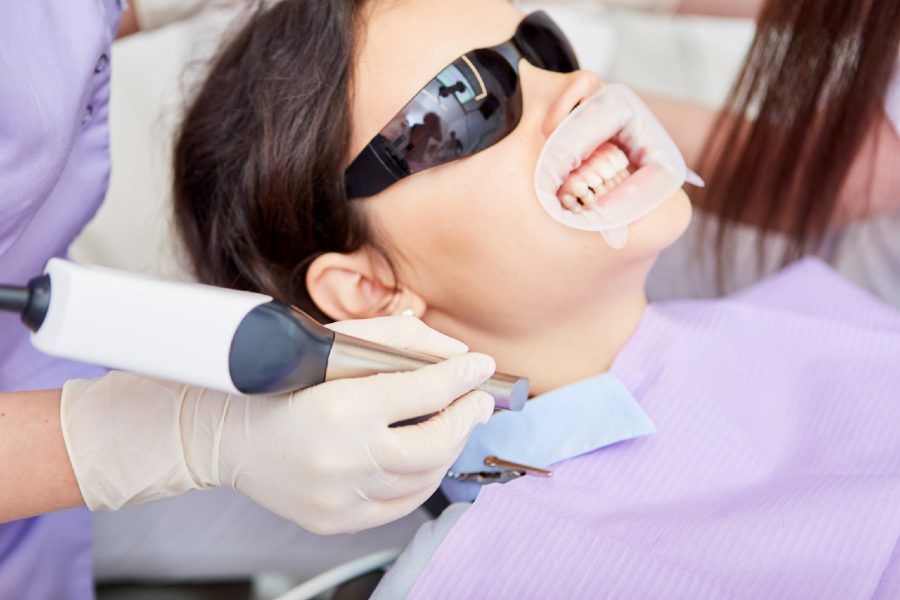Imagine having dark coloration or stains on your front teeth. Now picture yourself as a young child going to school with this type of tooth discoloration. As you could imagine (or maybe you experienced this first hand in your childhood), there is a great deal of stress, anxiety, and embarrassment that comes with this condition. This is especially true when you’re talking about stains that result from the medication tetracycline, which can be particularly noticeable and notoriously difficult to remove.
Teeth discoloration is a really common condition. There is good news. At South Davis Pediatric Dentistry, we provide solutions for discolored and stained teeth. The type of teeth whitening service that is most appropriate for your child is going to depend on the type and color of discoloration that they are dealing with. Keep reading to learn more about pediatric teeth whitening from South Davis Kids.
Tooth Discoloration in Children: Culprits and Treatments
As a parent, it’s completely normal to feel a sense of dismay when you realize that your child is dealing with a smile that is not full of pearly whites. Whether they are stained completely or have streaks of various colors ranging from grey to orange, it’s disheartening to see your child go through this.
Tooth discoloration can be caused by many different things, and some of these are more serious and others are simply cosmetic problems. We’re going to review the different types of tooth discolorations and what treatment options are appropriate for each one.
Grey Tooth Discoloration in Children
There are a number of different causes of grey tooth discoloration. When one tooth is grey (usually dark in color), but the other teeth are white, this is usually a sign of trauma. When a child experiences blunt force trauma to the mouth, a tooth can slowly die, which leads to the grey discoloration.
Besides blunt force trauma, when a tooth is injured and subsequently receives an increase in blood flow, it can also create a greyish discoloration. When dealing with grey discoloration, it’s important that your pediatric dentist conducts a thorough examination and takes X-rays. Sometimes injured teeth can abscess and may need to be removed. However, depending on the type of injury, sometimes teeth can heal and return to their original color.
When the child presents with grey discoloration on many teeth, the culprit is usually antibiotic use. Tetracycline is a common antibiotic that has been used for many years, staining teeth all the while. In fact, this side effect is so powerful that if a woman takes this antibiotic while she is pregnant, her child may present with teeth that appear gray in color. Primary teeth and secondary teeth can both be affected by the use of this antibiotic, although it’s more commonly seen on baby teeth. Treatments to resolve this type of discoloration usually involve intense bleaching, veneers, or crowns. However, when it comes to pediatric treatments – usually bleaching and whitening services take care of it.
There is another antibiotic that is often prescribed that can cause temporary grey discoloration of teeth, and that is amoxicillin. These types of stains will go away with fastidious oral hygiene and vigorous brushing.
Yellow or Orange Discoloration of Teeth in Children
Poor dental hygiene can cause children to develop yellow or orange discoloration of teeth. In order to prevent these types of stains, parents need to encourage frequent brushing and ensure that their child is paying particular attention to the gum line, where the orange build-up is most common. Bringing your child in for regular six-month professional cleanings along with keeping up with daily brushings can help prevent these stains from getting worse.
Black Tooth Discoloration in Children
Black lines or patches on the teeth are usually a side effect from iron-containing medications. Iron overdose is quite dangerous for children, so it’s not often that parents will see these types of stains unless they have a child with severe anemia that requires iron medications.
White Patches on Children’s Teeth
Another type of tooth stain commonly seen in children is white patches. Naturally, teeth are ivory, or creamy in color, and any type of bright white patch is noticeably out of place. By far the most common cause of white patches on teeth is a condition called fluorosis. Too much exposure to fluoride during childhood can lead to fluorosis.
These types of stains are very difficult to remove because they are intrinsic to the tooth itself. If the white patches are very noticeable, caps, veneers, and bleaching can help to reduce this visibility. White patches may also be the first sign of tooth decay. If this is the case, you need to ensure your child is frequently brushing their teeth in order to prevent cavities.
Great Advancements Have Been Made in Aesthetic Dentistry
Aesthetic dentistry has come a long way in the past decade. New innovation makes tooth restoration possible, even for patients who were told there was nothing they could do for their teeth in the past. The American Academy of Pediatric Dentistry (AAPD) recognizes the increased demand for pediatric dental whitening services. In their official policy on the use of dental bleaching for child and adolescent patients, the following is stated:
“The desire for improved dental esthetics has fueled innovations in dental materials. Patients, parents, and the news media request information on dental whitening for children and adolescents with increasing frequency. In addition, increased demand for bleaching materials and services has affected both the variety and availability of dental bleaching products on the market.”
Make Your Pediatric Dentist Appointment in South Davis County Today!
Are you concerned with tooth discoloration in your child? We can help determine the cause of the discoloration and provide appropriate treatment. Parents and physicians throughout Bountiful, Kaysville, Farmington, and Centerville trust the professionals at South Davis Pediatric Dentistry for children’s dental health needs, and you can too. Call us today at (801) 294-8880 to set up an appointment.


Recent Comments